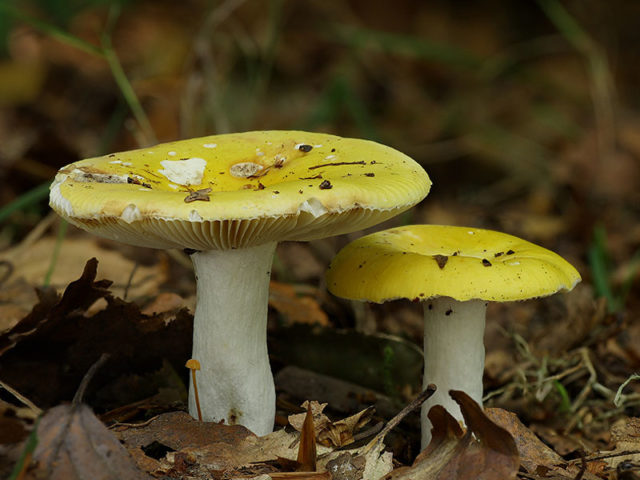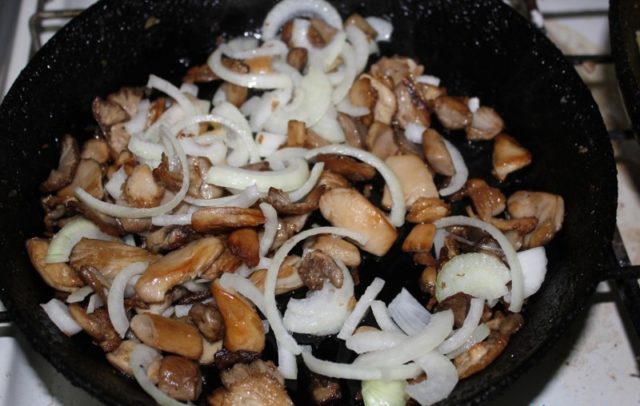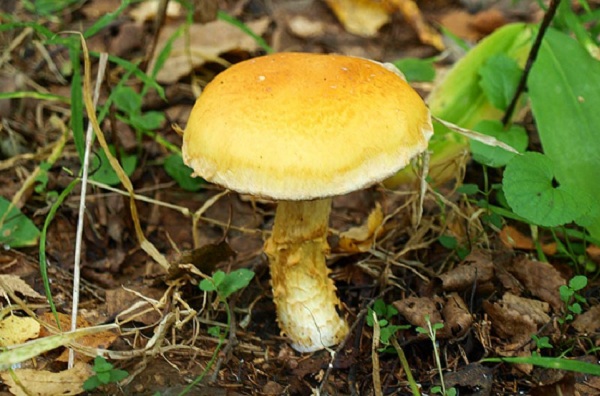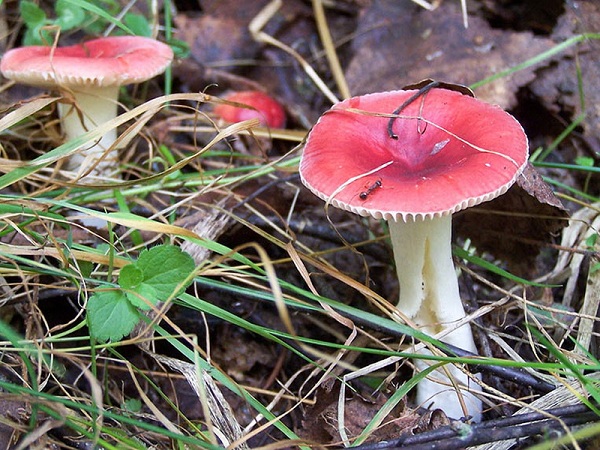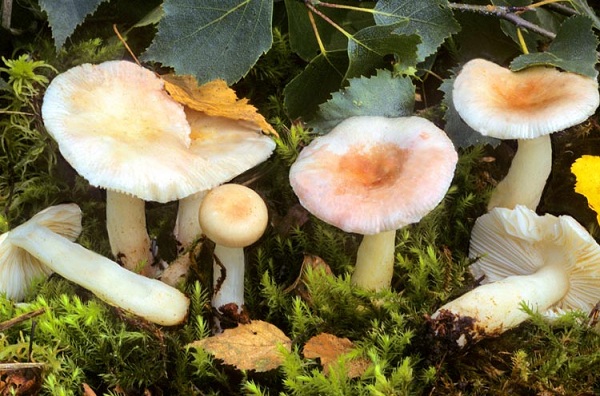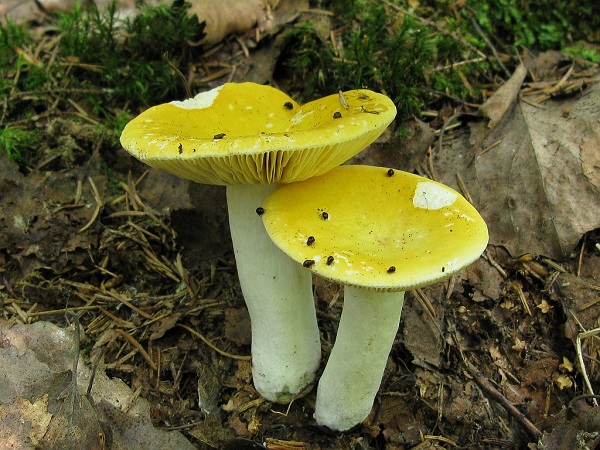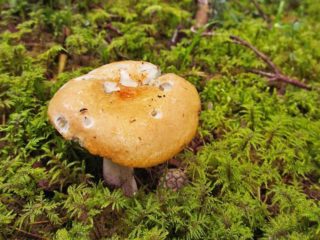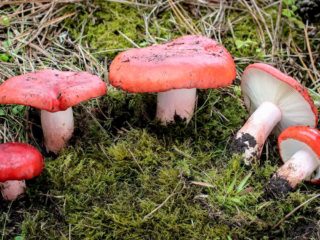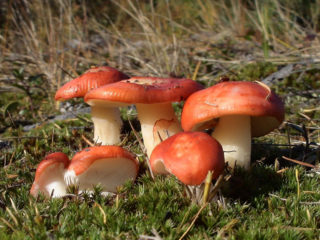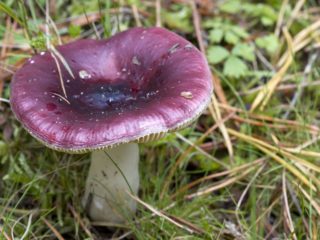Content
- 1 Where golden yellow russules grow
- 2 What golden yellow russules look like
- 3 Description of russula golden yellow
- 4 Is it possible to eat russula golden yellow
- 5 Taste qualities of golden yellow russula
- 6 Benefit and harm
- 7 False doubles of golden yellow russula
- 8 Application of russula golden yellow
- 9 Conclusion
Usually the rains and the autumn season are a time of expanse for mushroom lovers. Chanterelles, champignons or golden yellow russula are becoming valuable delicacies for mushroom pickers. In addition to common mushrooms, there are also inedible ones, which can be similar in many ways to those suitable for human consumption. It is worth noting that the Russula family is rich for the most part in edible varieties, and golden yellow is one of the most valuable mushrooms.
Where golden yellow russules grow
Mushrooms can grow anywhere, but according to their own schedule and in favorable conditions for the development of the fruiting body. Spores can be grown on their own at home, as well as used for industrial purposes. In the wild, a variety of golden-yellow mycelium is found in coniferous, mixed and deciduous forests, rarely along river banks, in swamps. Often, this family of several species at once can be found in fields or berry meadows.
What golden yellow russules look like
In appearance, the russula is quite simple to determine - a lamellar mushroom with a cap of a yellow or golden hue. The size of the cap depends on the growth time; the adult mycelium reaches 5-10 cm in diameter. From one mycelium grows from 4 to 9 pieces. The fruit body acquires a reddish tint along the edges of the cap, young ones - bright yellow. In some cases, the edges are cracked and the top skin curls inward. When collected, it quickly crumbles: a leg or a cap breaks.
Description of russula golden yellow
The appearance changes in terms of ripening: a young mushroom has a hemispherical cap shape, the old one has a depression in the center and a flat surface with edges concave inward. The color also changes from normal red at the time of initial growth to bright yellow when fully ripe. The surface is soft and elastic to the touch; in wet weather it has a slight sticky coating. The center of the cap does not change color, sometimes the dent has a pale yellow or even beige tint.
The stem is usually straight or slightly curved, cylindrical in shape. In the section, a pinkish shade of spongy pulp prevails. The size of the leg reaches 8-10 cm in length and 2-3 cm in diameter, the surface is rough with noticeable scaly. The flesh tastes sweet with a mushroom aftertaste, it crumbles strongly, so russula are collected in a separate container. The spores are found in ovoid sacs, and have a powder-like consistency. The plates are very close, not attached to the stem.
Is it possible to eat russula golden yellow
Basically, most mushrooms from the Russula family are edible. The yellow fruit body can be eaten in all variations. Usually the taste of the pulp is sweetish, but its presence depends on the area of growth and the nutritional value of the soil. The russules that grew in the fields or near the river are simply edible and almost always tasteless. Many cooks recommend soaking them in salted water, then the taste becomes delicate and very spicy.
Taste qualities of golden yellow russula
Forest mushrooms are the most valuable in taste, because they are very nutritious and have a pleasant taste and aroma. Usually the leg, and the mycelium itself, is odorless, so mushroom pickers do not collect many varieties of russula. The taste of the golden-yellow pulp is well remembered with a single use and leaves a sweetish aftertaste. The russula belongs to the 3rd category on the scale of the consumption of edible mushrooms. The inedible yellow varieties have no aroma and taste very bitter. They can be used, but you need to know the intricacies of cooking such varieties. When spore sacs are formed, the fruiting body loses all taste, therefore, the collection is carried out in the early stages of growth. Many people believe that a special taste appears when stewing or frying mushrooms over a high heat.
Benefit and harm
Like all mushrooms, russula is nutritious and beneficial for the human body. The golden yellow mushroom is rich in fiber and low in calories - about 20 kcal per 100 g fresh. The daily norm for an adult is 150-200 g. The composition contains lecithin, which quickly breaks down cholesterol. Due to the high content of russulin, russula can be consumed even raw. Vitamins PP and B1 are found in abundance, so we can say that mycelium is healthier than carrots. In some cases, its use can stop diarrhea and improve digestion.
Russula is harmful to diabetics. In general, the mushroom cannot harm a person, even with a weak immune system, but excessive consumption disrupts the digestion process. Also, its presence in the diet of children under 7 is not recommended. For liver problems, you should not eat mushrooms raw or pickled.
False doubles of golden yellow russula
Often, due to inexperience, mushroom pickers confuse yellow mycelium with bile toadstool. It is considered a false double, but in any weather it has a very slimy and sticky coating on the cap. The fruit body tastes bitter and irritates the mucous membrane, but the fungus is not fatal.
The pungent russula is similar to the old edible mushroom, with a dent in the cap and reddish edges. The mushroom is conditionally poisonous, because it has a sharp and bitter taste. In case of poisoning, damage to the mucous membrane of the esophagus, diarrhea may occur.
Birch russula is considered a low-risk mushroom. It grows mainly in meadows, fields and deciduous forests. The pulp tastes bitter, the mouth cavity will burn for a long time after consumption. You can distinguish it by the young mycelium - the cap is almost round and light pink.
The yellow russula is odorless and initially does not even taste bitter. Signs of poisoning are immediately noticeable - redness around the eyes, irritation of the oral mucosa and cornea. You can determine the edibility after cooking - a bitter aftertaste. Also, young mycelium is always a poisonous yellow hue, edible ones are reddish-pink.
Application of russula golden yellow
Russula, like other edible varieties of mushrooms, are versatile in use. They are mainly used in cooking, and dry powder from dried mushrooms is used in folk medicine. After 7-10 minutes of boiling or soaking, the mushrooms are fried, stewed with vegetables or marinated for the winter. Mushroom tincture is a natural antibiotic, so it is useful to use it for severe infectious diseases.
Conclusion
Russula golden yellow - edible mushroom with valuable taste. The name reflects the essence of the product, so you should be careful when harvesting. The mycelium of this species is not common and is similar to poisonous varieties, in this case you need to focus on the aroma and external characteristics. If you wish, you can get your own mycelium and do home growing.

